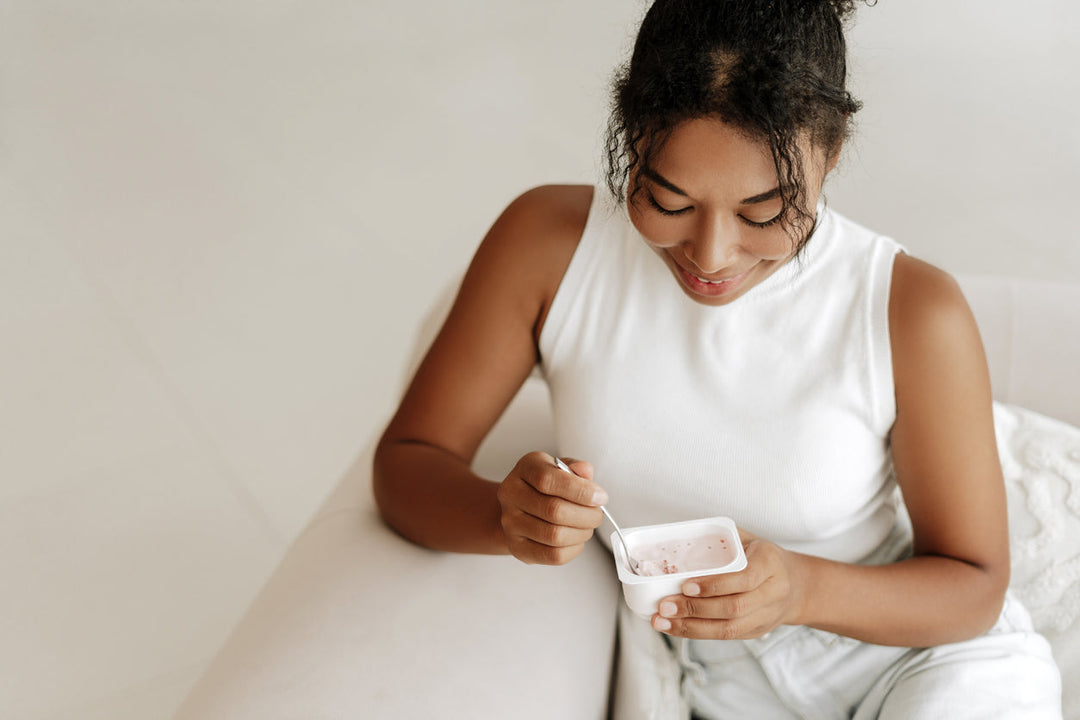Here's The Best Way To Cool Down After A Workout
You’ve warmed up, you’ve worked out, you’re sweaty and exhilarated (or, let’s be real, sweaty and exhausted).
But your gym sesh still isn’t quite finished: it’s time to cool it. When you’re exercising, you’re stressing your body. It’s good stress, but it’s stress nonetheless. Doing cool-down exercises — taking five or 10 minutes to do gentle, low-impact movements and basic stretches — allows your body to return to a state of homeostasis, or equilibrium: relaxed, alert, but not in active stress.
Why Do I Need to Cool My Body Down?
Warming up gets your body ready for exercise by upping your body temperature and helping your blood flow to your muscles more easily. Cool-downs serve the opposite major purpose: calming your heart rate, returning your breathing to a slower pace, and destressing your body by helping to regulate cortisol, the stress hormone.
“Stress raises your cortisol levels,” says Lisa Swanson, a health coach and ACE-certified personal trainer focused on working with women over age 50. “As women who are in menopause, we’re much more affected by cortisol levels day to day, so part of cooling down is about calming down our cortisol levels so that everything feels safe and you’re able to go back to your day.”
As for other aspects of exercise and menopause, research is mixed about whether cooling down or even general exercise helps with hot flashes, but we do know it won’t hurt — exercise supports thermoregulatory functions, which can help keep our bodies in equilibrium.
We also know it can help with maintaining a positive outlook. “When we cool down, it’s a chance to reflect on what your body just did,” says Rosanna Baita Lake, an ACE-certified personal trainer who specializes in training women ages 35 and older. “You get to congratulate your body and say ‘thank you’ or ‘I’m proud of you’ and be grateful for getting you through your routine.”
The big-picture goal is to return to your body’s homeostasis. But cooling down helps with other fitness goals, too.
“Cooling down is also about flexibility and mobility,” Lake says. “Can you stretch a little further? Do you have a greater range of motion than you did at the beginning of your workout?”
But it might not matter why you cool down — the point is that you need to make it a part of your exercise routine, just like the more active parts of your sessions. “People are often in a hurry to get on with their day,” Swanson says. “But it’s a mistake to not realize how integral it is to maintaining a balance of stress.”
Know When to Do Cool-Down Exercises
The old school of workouts — like what you probably learned in gym class — had us stretching before a workout. Today, the advice is flipped: Before strength training or cardio, experts recommend general movement (taking a brisk walk) and dynamic movement (say, arm circles) that focus on large muscle groups. But it’s not the time to stretch per se.
“After you strength train is the perfect time to stretch those muscles, when they’re nice and warm and supple,” Swanson says. “This way, you won’t create tears in your muscle fibers before you’ve begun to stress them with weight.” Targeted stretches can form the core of your cool-down time.
How to Cool Your Body Down
Before you do any specific flexibility or mobility exercises, cool down your whole system. “I walk to lower my heart rate and get my breathing back into a nice, slow pace,” Lake says. You can do it on the treadmill or a walk around the block, or just an amble through the gym; the point is to let this transition you into the last part of your workout. Think: less power walk, more Saturday evening stroll.
Another reason to avoid going from 60 to 0 in 30 seconds? Safety. Keeping your body active while your heart rate slows regulates your blood pressure, helping you avoid post-exercise syncope — or, as you’re more likely to call it, fainting. It doesn’t have to last more than five minutes; you just need to take your activity level down a notch.
After your heart rate is back to normal, the cool-down stretches that will work for you depend on what you did during the more active part of your workout. “Whatever muscles you’ve been working on are the muscles you’re going to want to stretch,” Swanson says. “So, say I was working my chest that day and was doing push-ups and bench presses. To cool down, I may just bring my arms back and pull them up slowly in a circle through a full range of motion.”
As you progress through your cool-down stretches — which can include basic movements such as lunges, forward and side bends, triceps stretches, and quad stretches — think about gradually letting your body continue to unwind. “Instead of going to the floor right away to stretch, keep your body upright at first,” Swanson says. The entire cool-down session can last anywhere from 10 minutes to as long as you’d like.
Once you’re ready to move to the floor, that’s when you do the deep, calming exercises that you might do at the beginning or end of a yoga class: child’s pose, side lying twists, and just lying down, hands at your sides or on your belly, focusing on your breath. Once you’re done, congratulations: You’re one of the cool kids now.
Autumn Whitefield-Madrano has been writing and editing content for and about women for 25 years. Her book, Face Value: The Hidden Ways Beauty Shapes Women’s Lives (Simon & Schuster, 2016), has been called “a valuable addition to contemporary feminist writing” and “smart, even-handed, and personal” by leading media outlets.











